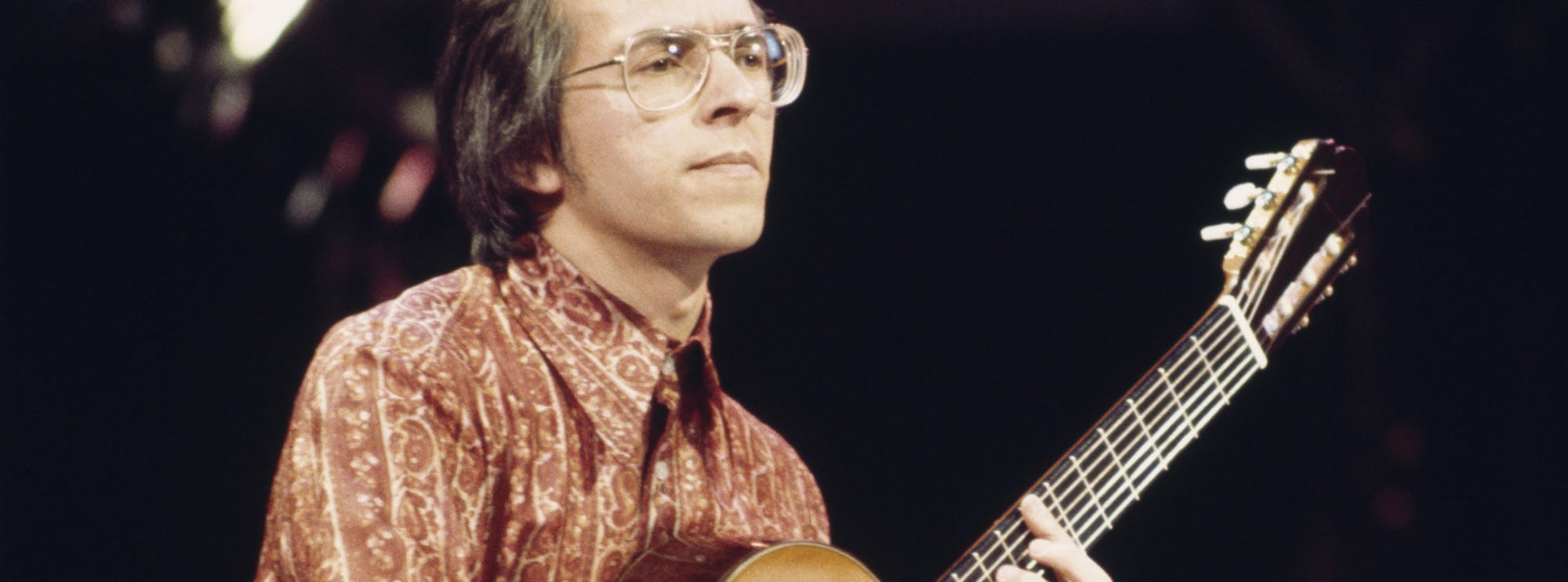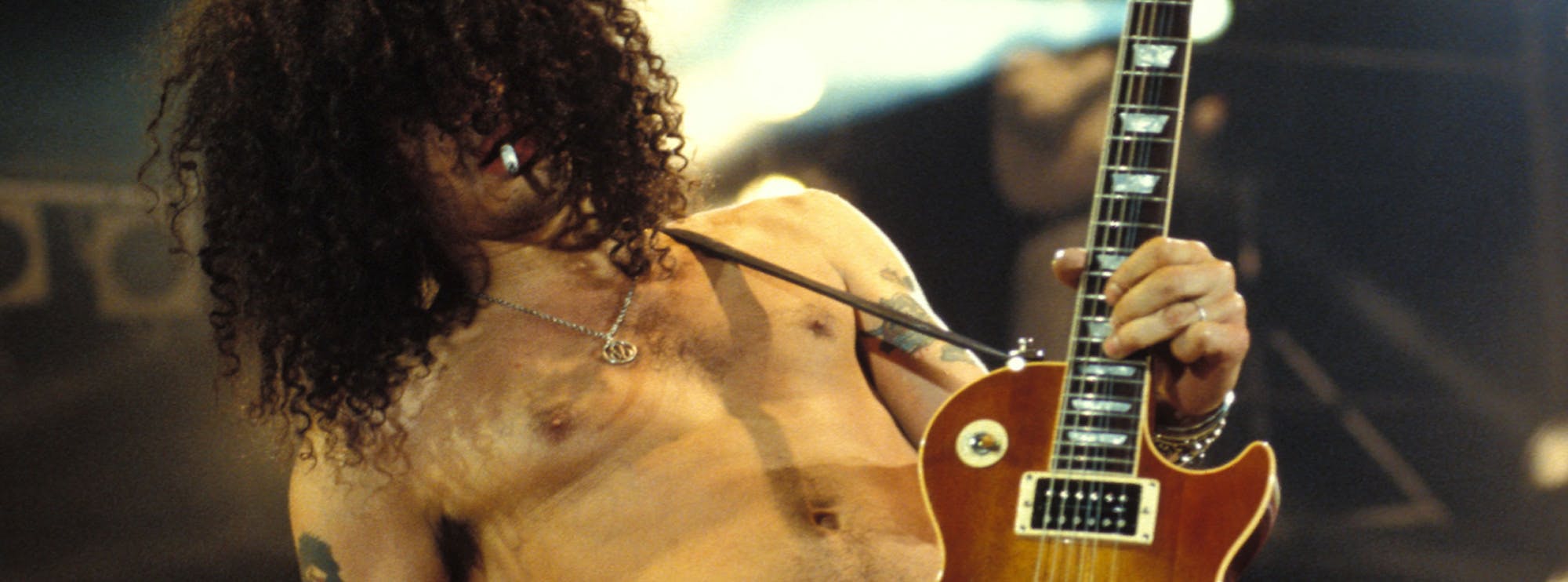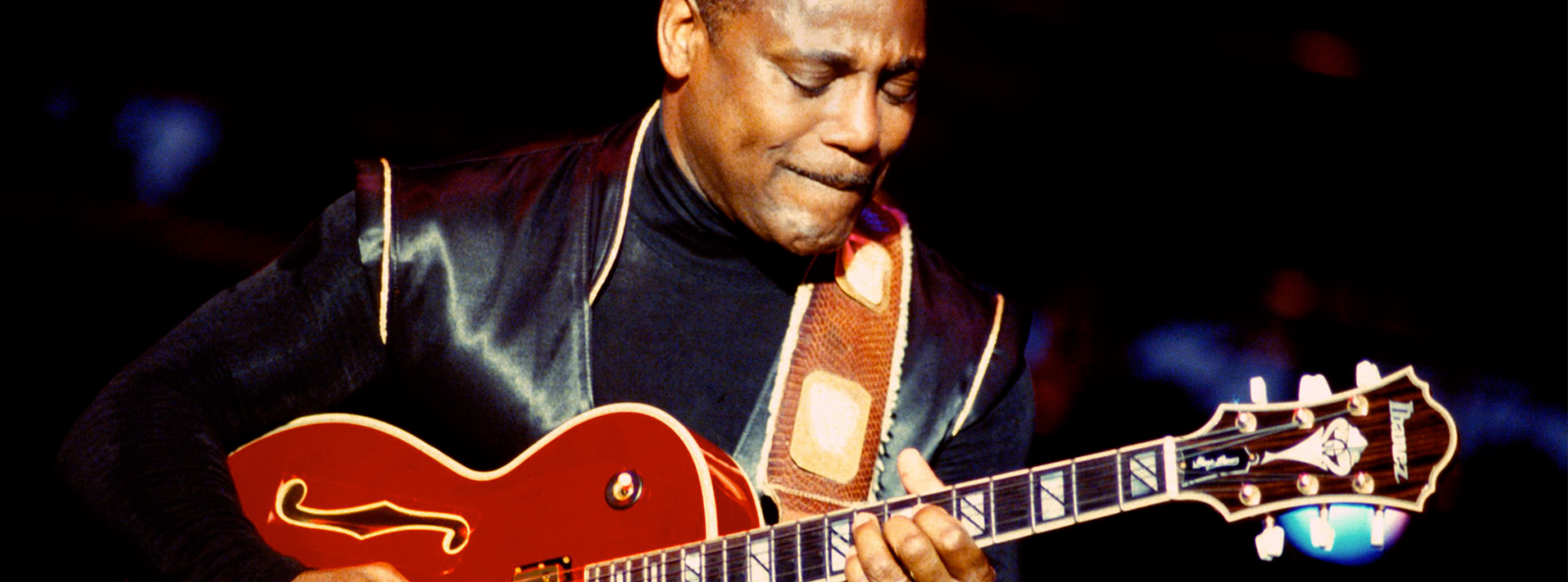The Joshua Tree by U2: A guitarist's perspective
Guitar lessons by Danny Gill
"The Joshua Tree" is the fifth studio album by Irish rock band U2, released in 1987. The album is widely regarded as one of the greatest albums of all time, and its unique sound has inspired generations of guitarists. The album instantly received critical acclaim around the world, topping charts in over twenty countries, and becoming the fastest-selling album in British history with the help of the hit singles; “With or Without You”, “I Still Haven’t Found What I’m Looking For”, and “Where the Streets Have No Name”. The Joshua Tree also took home the Grammy Award for Album of the Year.
In this guitar lesson course, Lick Library veteran instruction Danny Gill shows you how U2’s The Edge uses multiple parts, dynamics and effects to create the melodic guitar work that has helped make ‘The Joshua Tree’ a classic album. This course includes full breakdowns of tracks such as “Where the Streets Have No Name” and “With or Without You”. In this article, we will delve deep into the guitar work on the album, focusing on The Edge's contributions, the guitar scales used, and the techniques employed. Each song will be analysed from a guitarist's perspective, providing insights into the making of this iconic album.
Track-by-Track Analysis
1. Where the Streets Have No Name
This opening track is characterized by its driving arpeggiated chord progression, played with a combination of delay and reverb effects. The Edge uses a mix of the D major scale and the D Mixolydian mode, resulting in a soaring, anthemic sound. The guitar solo consists of single-note lines and double-stops, providing a melodic counterpoint to the chord progression.
2. I Still Haven't Found What I'm Looking For
In this song, The Edge employs a syncopated rhythm and open-string riffs, giving the track a lively, uplifting feel. The song is primarily based on the G major scale, and the chords follow a I-IV-V progression. The guitar solo uses hammer-ons, slides, and double-stops, showcasing The Edge's ability to create memorable melodies.
3. With or Without You
This ballad features a simple, yet powerful, arpeggiated chord progression played with a combination of finger-picking and delay effects. The song is in the key of D major and includes the use of a capo on the second fret. The guitar solo employs a mix of slides, string bending, and sustained notes, creating an emotional and haunting soundscape.
4. Bullet the Blue Sky
"Bullet the Blue Sky" is a hard-hitting, politically charged track driven by power chords and palm-muted galloping rhythms. The Edge utilizes the E minor pentatonic scale and incorporates bluesy bends, octave melodies, and unison bends in the guitar solo, creating a powerful and aggressive sound.
5. Running to Stand Still
This introspective ballad is based on the E major scale and features a delicate finger-picked arpeggiated chord progression. The Edge's use of slides, harmonics, and sustain in the guitar solo adds a haunting, ethereal quality to the song.
6. Red Hill Mining Town
This song is characterized by its use of barre chords and chord progressions in the key of B Mixolydian. The Edge skilfully employs alternate picking and hybrid picking techniques, along with string bending and pre-bends in the guitar solo, creating a rich, textured sound.
7. In God's Country
"In God's Country" is a fast-paced, uplifting track that features The Edge's signature arpeggiated chord progressions, played with a combination of delay and modulation effects. The song is based on the G major scale, and the guitar solo uses a mix of slides, double-stop bends, and harmonics, resulting in a memorable and melodic sound.
8. Trip Through Your Wires
This track features a bluesy, rootsy feel, with The Edge employing the E minor pentatonic scale and open-string riffs. The guitar work in this song showcases the use of double-stops, slides, and chromaticism, adding a raw, gritty texture to the overall sound.
9. One Tree Hill
"One Tree Hill" is a heartfelt, emotional track that highlights The Edge's ability to create atmospheric, ambient soundscapes using arpeggiated chord progressions and reverb-laden guitar lines. The song is in the key of D major, and the guitar solo showcases The Edge's use of slides, harmonics, and legato techniques, resulting in a poignant and moving performance.
10. Exit
"Exit" is a dark, moody track driven by power chords and a dissonant chord progression in the key of E minor. The guitar solo features The Edge employing a variety of techniques, including tremolo picking, tapped harmonics, and dive-bombs, creating a tense and unsettling atmosphere.
11. Mothers of the Disappeared
The closing track of the album is a haunting, sombre ballad that showcases The Edge's use of arpeggiated chord progressions and finger-picking techniques. The song is in the key of A minor, and the guitar solo incorporates sustained notes, string bending, and harmonics, evoking a sense of loss and longing.
The Edge’s Contribution to The Joshua Tree
Before diving into the songs themselves, it's important to acknowledge the enormous contributions of U2's lead guitarist, The Edge (David Howell Evans). The Edge is known for his minimalist style, innovative use of effects, and textural approach to guitar playing. On "The Joshua Tree," he masterfully employs a mix of reverb, delay, and modulation effects, creating the album's signature atmospheric sound.
Conclusion
"The Joshua Tree" is a testament to U2's ability to craft timeless, innovative music that resonates with listeners across generations. For guitarists, this album offers a masterclass in atmospheric, minimalist guitar playing that has influenced countless musicians in the years since its release. By examining the techniques and scales used by The Edge throughout "The Joshua Tree," guitarists can gain valuable insights into the creation of this iconic album and apply these lessons to their own playing.
By understanding the techniques employed by The Edge and appreciating the nuances of his guitar work, guitarists can expand their own repertoire and develop a deeper appreciation for the artistry behind "The Joshua Tree." This analysis serves as a starting point for further exploration and a reminder of the power of innovative guitar playing in shaping the sound and impact of an album.
Guitar Techniques Used in "The Joshua Tree"
"The Joshua Tree" is a guitar-centric album that showcases The Edge's innovative and minimalist approach to the instrument. Here is a list of the guitar techniques used throughout the album, with links to further information:
- Arpeggiated chord progressions
- Open-string riffs
- Slides
- String bending
- Double-stops
- Harmonics
- Hammer-ons
- Sustain
- Finger-picking
- Palm-muting
- Power chords
- Syncopated rhythms
- Bluesy bends
- Octave melodies
- Galloping rhythms
- Alternate picking
- Hybrid picking
- Pre-bends
- Tremolo picking
- Tapped harmonics
- Dive-bombs
- Unison bends
- Double-stop bends
- Barre chords
- Capo
- Chromaticism
About The Tutor
Tutor Profile
Danny Gill
Danny Gill is, without a doubt, the most loved tutor by our community. With an incredible array of DVDs and web lessons for LickLibrary covering a wide variety of topics all of which he covers with incredible detail, it's no wonder he carries as much respect as he does. As...




